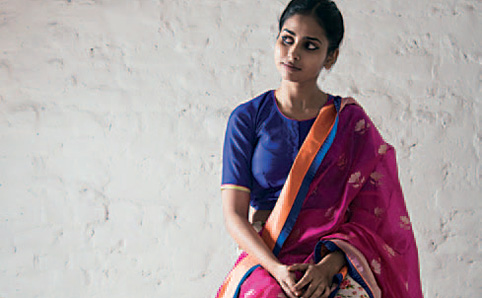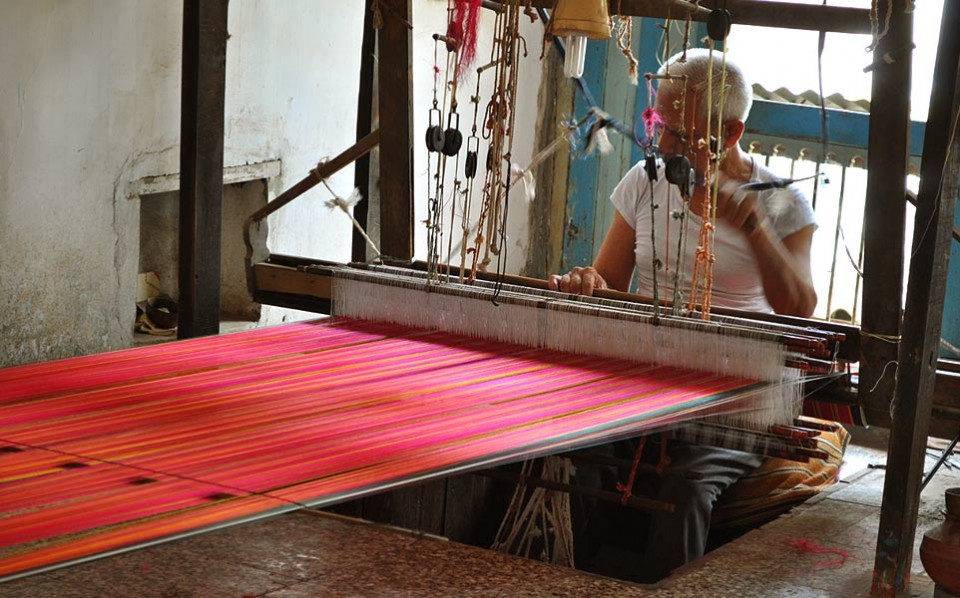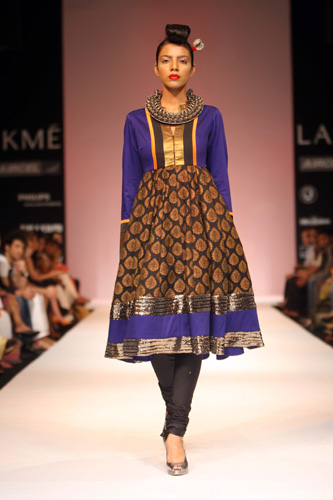
Mashru Fabric
The Mashru fabric is a vibrant, handwoven mix of Silk and Cotton textiles. The word ‘Mashru’ means ‘permitted’ in Arabic and its Sanskrit variation ‘Misru’ means ‘mixed’. Mashru has a characteristic fine satin finish, bright contrasting stripes in vibrant colors and striped Ikat weave. The fabric is mainly manufactured in Patan and Mandvi in Gujarat, India. Mashru is an important part of the bridal trousseau in a variety of Hindu communities like Sarees and Lehengas.
History
The weave is said to have originated somewhere from the West Asia around 19th century. The weaving of Mashru fabric is an old tradition in India and it was a popular trading textile to the Ottoman empire and Gulf countries. The word Mashru is said to have come from the Muslim community, where Silk fabric was banned since it was made by killing the cocoons and silkworms. This led to the production of Mashru fabric as it had a Silk exterior but the inner fabric which stays in direct contact with the skin was made of Cotton. Mashru became very popular in Turkey, Persia and many Mediterranean countries as it gave them the freedom of wearing Silk clothing without breaking their religious laws.
The Mashru slowly found its place among the Hindu community as well and the fabric became an integral part of the wardrobe of Kutch Nomads.
The Making
The weaving of this fabric was practiced across the country in different forms; from Deccan to Lucknow to Bengal. Nowadays, only weavers from the small towns of Gujarat, mainly Patan and Mandvi practice this craft.
The expert weavers have excelled in this exquisite craft by learning from their ancestors. Mashru fabric is made of silk and cotton where silk is used as the vertical yarn and Cotton makes the horizontal yarn. Each Silk weave goes under the Cotton yarn once and about five or eight times above the Cotton yarn.
After complete weaving of the fabric, it is washed with cold water and beaten with wooden hammers for about one minute while it is still moist. Then a paste of wheat flour called glazing is applied on the folds of the fabric. The fabric is later beaten with wooden hammers and compressed with hard press. Finally, color is added to the fabric using natural vegetable dyes.
This intriguing weave technique results in a shiny surface that resembles Silk fabric from the outside, with the comfortable of Cotton in the inner side of the clothing. The interweaving of Cotton and Silk makes the Mashru fabric more durable.
Present Day Scenario
Nowadays, a few craftsmen use chemically dyed rayon instead of pure Silk to reduce the cost of the final product. Besides being economical, Rayon gives a better texture and shine than Silk. Although, the use of synthetic dyes make the fabric weak, unlike natural ones that grow richer with age.
The Mashru fabric has a very practical utility as the Silk on the outer surface gives a beautiful, shiny appearance, the cotton yarns underneath make it perfect for the hot and humid climate. Mashru is traditionally used in the production of garments but it is also used in making wide range of home furnishings like cushions and quilts.
The designs of Mashru have become simpler with time. The use of multi-hued Ikats and patterned stripes are not seen much. It is being replace by bright and vivid designs, along with solid colored fabrics. The craftsmen, nowadays also incorporate Bandhani saree designs along with Ikat. The expert weavers making this fabric are probably the last generation who will continue practicing this beautiful craft. Most of the weavers are 50 years of age and their children have moved to the urban cities in search for work opportunities.
Maintenance
This fabric is relatively easier to maintain than pure Silk. Although some care should be taken like washing it in cold water and a slow rinse cycle. Also, drying it away from direct sunlight helps in keeping the glossiness of the fabric intact for a longer time.
Categories: Textiles


